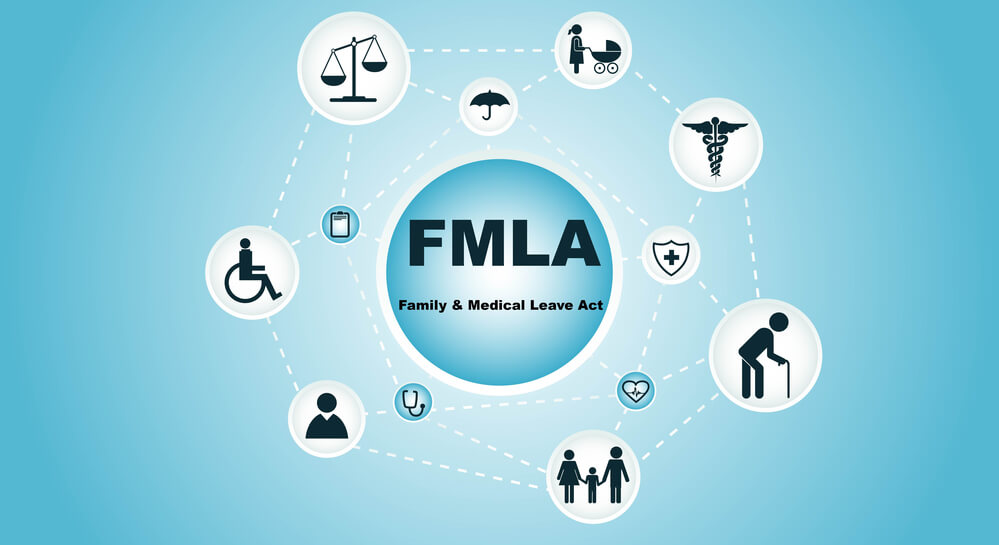
What Are the Common Emotions of Family Caregivers?
The frustration and confusion of having two different and contradicting emotions at the same time is how most family caregivers tell their stories. You know that you love them, but you have these other opposite feelings, too, What gives? You are human and you can have two completely different feelings and emotions at the same time. Most of the time, you have one set of feelings and emotions about the persona and another set of feelings and emotions about the situation.
A few examples of conflicting emotions or feelings felt at the same time: aka Mixed Feelings
· Happy & Sad
· Excited & Scared
· Confident & Doubtful
· Love & Anger
· Time to be with loved ones and time to be alone
· Feeling a sense of freedom and relief when the person we have been taking care of dies and we miss them.
Having these mixed emotions drains us. Not because we have them, but because of how we “feel” about having them. Feeling the conflict is what stresses us out. Why? Because we want everything to be “just so” and in a “neat little box.” That is not reality. We must stop beating ourselves up for having mixed feelings or contradictory feelings. Keep fighting the battle of the mixed emotions and you will become emotionally drained Plus you haven’t solved the contradiction and the cycle continues.
Get rid of the word, “but” and replace it with “and.” I love my wife and she makes me crazy. “I’m glad I married him, and at times, I don’t like him very much.” It really is okay to feel your feelings. You don’t have to act on them. It really is okay that you have mixed emotions. Life is messy, relationships are messy and we can all put the “fun” in dysfunctional.
Caregiving can trigger a range of emotions, from love and compassion to frustration and anger. Caregivers may feel overwhelmed, stressed, anxious, guilty, or resentful due to the demands of caregiving. These emotions can affect the caregiver’s quality of life and the quality of care they provide to their loved ones. Understanding and managing these emotions can help caregivers to cope better, reduce stress, and improve their overall well-being.
Understanding Caregiver Emotions
Common emotions experienced by family caregivers
Here are some of the most common emotions experienced by family caregivers:
· Stress and anxiety: Caregiving can be a stressful and anxiety-provoking experience, particularly when caregivers are responsible for the health and well-being of their loved ones. Caregivers may worry about their loved ones’ health, finances, and future, as well as their own ability to provide care.
· Guilt: Caregivers may feel guilty about not being able to provide enough care, not being able to spend enough time with their loved ones, or feeling resentful or angry towards their loved ones.
· Anger and resentment: Caregiving can be a thankless job, and caregivers may feel unappreciated or taken for granted. Caregivers may also feel angry or resentful towards their loved ones for their illness or condition.
· Sadness and grief: Caregivers may feel sad or grieve for the loss of their loved onone’sealth or for the loss of the relationship they had before their loved ones became ill.
Coping strategies for caregiver emotions
Here are some strategies that caregivers can use to cope with their emotions:
· Take care of yourself: Caregivers need to take care of their own physical and emotional health in order to provide the best care for their loved ones. This includes eating healthy, getting enough sleep, and taking breaks when needed.
· Seek support: Caregivers should seek support from family, friends, and support groups. Talking to others who are going through similar experiences can help caregivers feel less alone and more understood.
· Set boundaries: Caregivers should set boundaries and learn to say no when they need to. This can help prevent burnout and resentment towards their loved ones.
· Practice self-compassion: Caregivers should practice self-compassion and be kind to themselves. They should remind themselves that they are doing the best they can and that it’s okay to make mistakes.
The Emotional Journey of Caregiving
Initial Shock and Denial
When a loved one is diagnosed with an illness or condition that requires caregiving, family caregivers may experience shock and denial. They may struggle to come to terms with the diagnosis and the changes that it will bring to their lives. This can be a difficult time, as caregivers may feel overwhelmed and unsure of how to move forward. Your hopes and dreams of the future are now either changed or gone.
Overwhelm and Anxiety
As caregivers begin to take on more responsibilities, they may feel overwhelmed and anxious. They may worry about their loved one’s health and well-being, as well as their own ability to provide care. This can lead to feelings of stress and anxiety, which can take a toll on caregivers’ physical and emotional health. The care receiver’s needs grow over time and at first, those needs were manageable, but now, it is too much.
Guilt and Regret
Caregivers may also experience feelings of guilt and regret. They may feel guilty for not being able to do more, or for feeling resentful or frustrated at times. They may also regret decisions that they have made or actions that they have taken. These feelings can be difficult to manage, but it is important for caregivers to remember that they are doing the best that they can. You will feel guilt, get used to it. You will have regrets, accept it. You may not have had any good choices, so you must make the choice that you will regret the least.
Resentment and Anger
As caregiving responsibilities increase, caregivers may also experience feelings of resentment and anger. They may feel resentful of the changes that caregiving has brought to their lives, or of the impact that it has had on their relationships and other responsibilities. They may also feel angry at their loved one’s condition or at the healthcare system. It is important for caregivers to find healthy ways to manage these feelings, such as through self-care or seeking support from others.
Acceptance and Adaptation
Over time, caregivers may begin to accept their new role and find ways to adapt to the challenges of caregiving. They may develop new skills and strategies for managing their loved one’s care and may find a sense of purpose and fulfillment in their role as a caregiver. While caregiving can be challenging, it can also be a rewarding and meaningful experience.
Common Emotions Experienced by Caregivers
Stress
Caregiving can be physically and emotionally exhausting, leading to stress. Caregivers may feel overwhelmed, anxious, and irritable. They may also experience physical symptoms such as headaches, fatigue, and sleep disturbances.
Depression
Depression is a common emotion experienced by caregivers. They may feel sad, hopeless, and helpless. Caregivers may also experience a loss of interest in activities they once enjoyed.
Guilt
Caregivers may feel guilty for not being able to do more for their loved ones. They may also feel guilty for taking time for themselves or for feeling angry or resentful.
Resentment
Caregivers may feel resentful towards their loved ones for the burden of care they have taken on. They may also feel resentful towards other family members who are not helping or towards healthcare professionals who they feel are not providing adequate support.
Loneliness
Caregiving can be isolating, and caregivers may feel lonely and disconnected from their social support networks. They may also feel like they have lost their sense of identity outside of their role as a caregiver.
Fear
Caregivers may experience fear about the future, including the health and well-being of their loved ones. They may also fear their own ability to continue providing care. Another fear that arises is the fear of failure and that one is probably the worst one of all. You will not fail, you cannot fail.
It is important for caregivers to recognize and address these emotions. Seeking support from healthcare professionals, support groups, or family and friends can help caregivers cope with the emotional challenges of caregiving.
Coping Mechanisms for Caregiver Emotions
Self-Care
Taking care of oneself is critical for caregivers. Self-care activities can help caregivers relax and recharge. Here are some self-care activities that caregivers can engage in:
- Exercise: Regular exercise can help reduce stress and improve mood.
- Meditation: Meditation can help reduce stress and promote relaxation.
- Sleep: Getting enough sleep is essential for caregivers to maintain their energy levels.
- Healthy Eating: Eating a well-balanced diet can help caregivers maintain their physical health.
Support Groups
Caregivers can benefit from joining support groups where they can share their experiences, feelings, and concerns with others who are going through similar situations. Support groups can provide a sense of community and reduce feelings of isolation. Caregivers can find support groups through local hospitals, community centers, or online forums.
Professional Help
Caregivers may benefit from seeking professional help from a therapist or counselor. A therapist can help caregivers manage their emotions and provide coping strategies. Caregivers can find a therapist through their healthcare provider, local hospitals, or online directories.
The Importance of Emotional Health in Caregiving
Caregiving can be an emotionally challenging experience for family members. It is common for caregivers to experience a range of emotions, including stress, anxiety, guilt, and sadness. These emotions can be overwhelming and can have a significant impact on the caregiver’s emotional well-being.
It is important for caregivers to prioritize their emotional health to ensure that they can provide the best care possible for their loved ones. Neglecting emotional health can lead to burnout, depression, and other mental health issues that can affect the caregiver’s ability to provide care.
One way to maintain emotional health is to identify and acknowledge the emotions that arise during caregiving. Caregivers should allow themselves to feel and express their emotions, as bottling up emotions can lead to further stress and anxiety. It is also important to seek support from others, such as family members, friends, or a support group, who can provide a listening ear and emotional support.
Another way to maintain emotional health is to practice self-care. This can include engaging in activities that bring joy and relaxation, such as reading, listening to music, or taking a walk. Caregivers should also make time for physical exercise, healthy eating, and getting enough sleep.
The emotions just pop up. It is okay, be curious about them. No judgment is allowed, they are thoughts and feelings. You
don’t have to react to them or act on them. Don’t stuff your feelings down, they will eventually come out and it probably won’t be in a good way.



